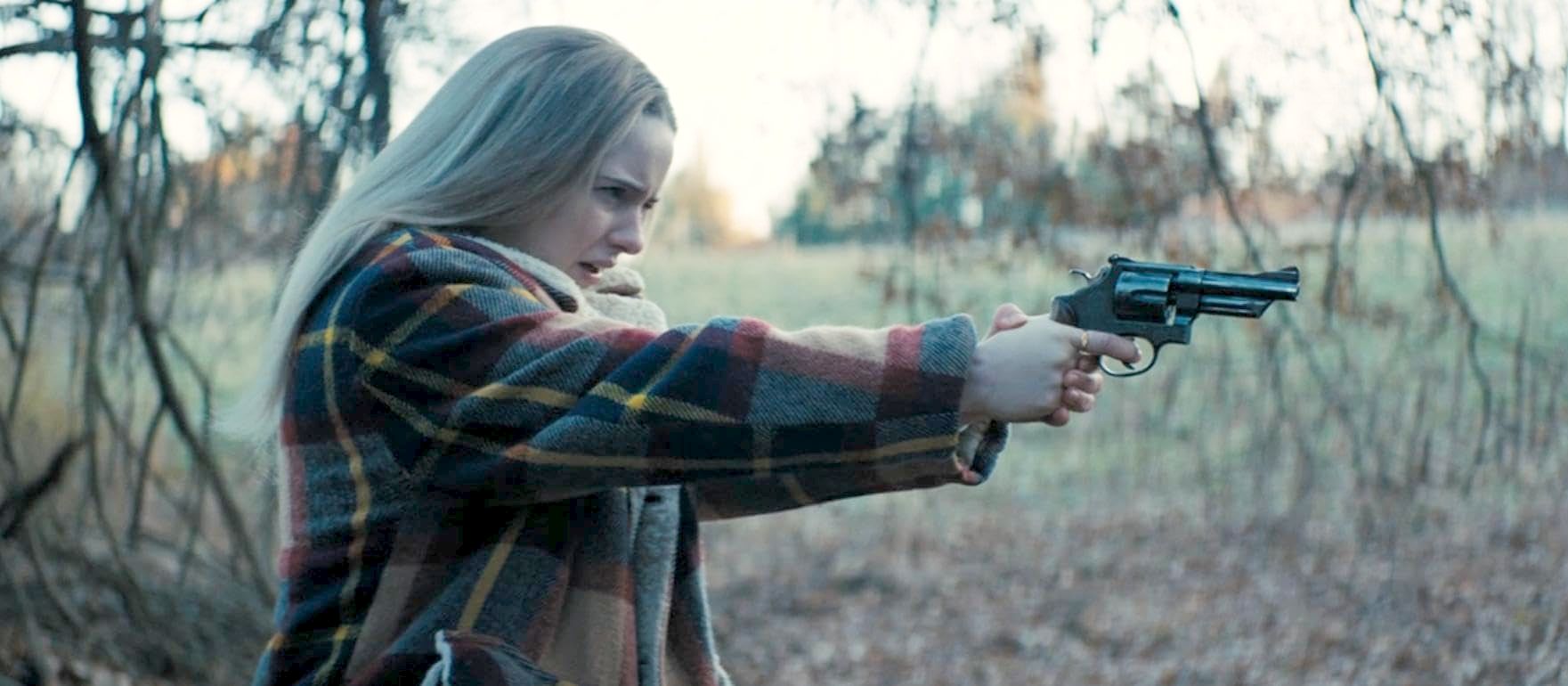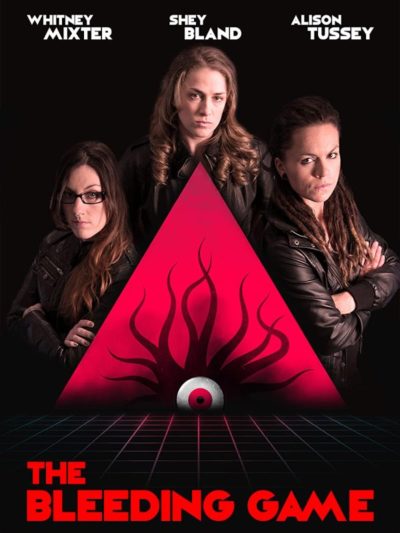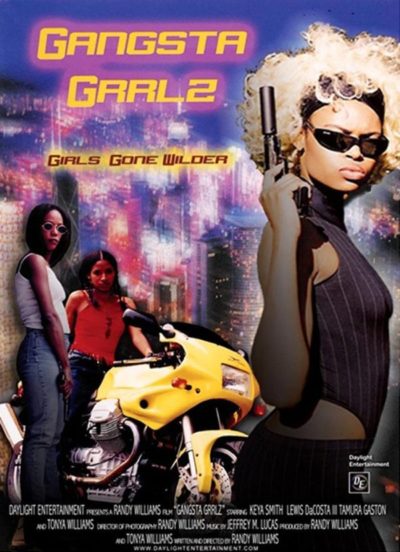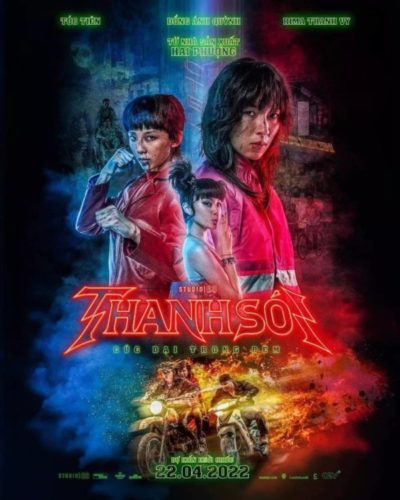 ★★★★
★★★★
“Taking action”
 Hearing that James Gunn, new head of the DC movie department at Warners, just recently announced David Corenswet and Rachel Brosnahan as the new actors to play Superman and Lois Lane in the next “Superman”-movie, I felt the need to find out more about these new actors. For Brosnahan I chose the movie I’m Your Woman, an Amazon Prime production from 2020. For one thing, she played the main role, and secondly a two-hour movie is much quicker to watch than a series like The Marvellous Mrs. Maisel. Sure, for that series she got two Golden Globes, one Emmy and two Screen Actors Guild Awards – but my time is a bit limited. Also, I prefer gangster movies over a dramedy show.
Hearing that James Gunn, new head of the DC movie department at Warners, just recently announced David Corenswet and Rachel Brosnahan as the new actors to play Superman and Lois Lane in the next “Superman”-movie, I felt the need to find out more about these new actors. For Brosnahan I chose the movie I’m Your Woman, an Amazon Prime production from 2020. For one thing, she played the main role, and secondly a two-hour movie is much quicker to watch than a series like The Marvellous Mrs. Maisel. Sure, for that series she got two Golden Globes, one Emmy and two Screen Actors Guild Awards – but my time is a bit limited. Also, I prefer gangster movies over a dramedy show.
I’m Your Woman takes place in the 1970s. Although a year is never specifically mentioned, the dresses, suits, hair styles and the ugly interior design speak for themselves. Jean (Brosnahan) plays the wife of gangster Eddie (Bill Heck). She knows that he’s a gangster but not what he exactly does. In material terms, while there is everything that she could wish for, she is obviously unfulfilled, as she would have liked to have a child – but it didn’t work out. A big change in her life happens when Eddie one day brings home a baby, declaring that it is now theirs. Jean is more than a little over-burdened with the new task, for taking care of anything or anyone, least of all a baby, is something she never had to do.
Very soon her life changes even more dramatically, when one night Eddie doesn’t come home. Instead, she is given a large amount of money and told to go with Cal (Kene), a friend of Eddie’s. She is not told what has happened, so her subsequent escape and isolation in a foreign house remains a mystery to her for quite some time. As one can probably already guess from the above, the movie is not excessively an action movie with a whole lot of bang-bang. That said, it nevertheless earns its place in the “girls with guns” category, even if this element shows up quite late in the game. For most of the movie, the heroine (and by extensions we, the audience) are left in the dark concerning the why, what and how. Only slowly are we given that information, with light eventually being shed on the background of what happened and the fate of Eddie.
 I think this makes it quite an unusual movie as – in contrast to many other movies – we are not immediately brought up to speed with an info-dump, so that we tie ourselves emotionally to Jean. As a result, the fear and tension she experiences are really palpable to us, too. We don’t know who Cal is and why he is helping her, or why people are after Jean. In my opinion, the movie is particularly successful in showing a female perspective, as part of something that would otherwise potentially have been just an ordinary gangster story. In the beginning, Jean does whatever she is told, while at the same time also trying her best to be a good mother to the little baby, even if her knowledge in this respect is also just rudimentary.
I think this makes it quite an unusual movie as – in contrast to many other movies – we are not immediately brought up to speed with an info-dump, so that we tie ourselves emotionally to Jean. As a result, the fear and tension she experiences are really palpable to us, too. We don’t know who Cal is and why he is helping her, or why people are after Jean. In my opinion, the movie is particularly successful in showing a female perspective, as part of something that would otherwise potentially have been just an ordinary gangster story. In the beginning, Jean does whatever she is told, while at the same time also trying her best to be a good mother to the little baby, even if her knowledge in this respect is also just rudimentary.
It’s only when she realizes that, unless she leaves behind the passive role that she has occupied for such a long time and becomes active, the hunt for her will never end. After that, she is able to change her life and save her new found friends, including Cal and his family. In that respect – and I know how this sounds – this movie can actually be called an emancipation drama. For once this is real, in contrast to the kind of what many modern movies understand under that expression. Also, the story can be seen as offering a historical comment on 1970s paranoia, and in particular how everything seemed to be chaotic at this time. Jean has to come to terms with the notion that those people who try their best to protect her, might have just as little a clue as she has.
I liked this movie, filmed in Pittsburgh, very much. The inherent tension can be felt for the entirety of the movie and it always feels and sounds like the 1970s. Wikipedia tells me the movie was only in theatres very briefly before Amazon Prime released it online. Rachel Brosnahan gives a first-class performance here though the whole production is top-notch. I regret that, too often, quality content like this flies under the radar, while we are distracted with yet another of these big dumb blockbusters Hollywood is constantly pouring over us. I feel Brosnahan is an actress of whom I would like to see more. That appears not to be problem, with plenty more of her work apparently available on Prime.
Dir: Julia Hart
Star: Rachel Brosnahan, Marsha Stephanie Blake, Arinzé Kene, Jameson Charles





 The above is said by an Arab character, passing on advice from her father. By the end of it, despite this being an Israeli-produced movie, you may be inclined to agree with them. Mind you, on the basis of this, you should also never trust, the Arabs, Americans or Germans either. This dive into the world of intelligence, counter-intelligence and realpolitik is so morally murky, it should come with a head-lamp, to assist viewers peering into the darkness. Naomi (Riskin) is a Mossad agent, who has been out of the game for two years, since her husband, a fellow spy, was killed in a terrorist attack. She has now been tasked with what should be a simple job, guarding Hezbollah informant Mona (Farahani).
The above is said by an Arab character, passing on advice from her father. By the end of it, despite this being an Israeli-produced movie, you may be inclined to agree with them. Mind you, on the basis of this, you should also never trust, the Arabs, Americans or Germans either. This dive into the world of intelligence, counter-intelligence and realpolitik is so morally murky, it should come with a head-lamp, to assist viewers peering into the darkness. Naomi (Riskin) is a Mossad agent, who has been out of the game for two years, since her husband, a fellow spy, was killed in a terrorist attack. She has now been tasked with what should be a simple job, guarding Hezbollah informant Mona (Farahani). It is possible to do Lovecraft on a low-budget and make it work. Earlier this year, I was introduced to the delightful films of Lars Henriks, who did
It is possible to do Lovecraft on a low-budget and make it work. Earlier this year, I was introduced to the delightful films of Lars Henriks, who did  Not to be confused with the clearly different
Not to be confused with the clearly different  Well, this is certainly the first film I’ve reviewed here which drops both into the “women in prison”
Well, this is certainly the first film I’ve reviewed here which drops both into the “women in prison”  This is a fairly classic “rise from nowhere” story, yet is well-executed and done in a world which is interesting for its differences. The heroine is – surprise! – Marilia, whom we first meet on the battlefield, about to face an opponent of superior numbers. We then flash back to her childhood, growing up in a Tyracian brothel. Her mother was one of the “painted ladies,” but after she dies, Marilia and her brother Annuweth are on increasingly thin ice. Their effort to run away is unsuccessful, yet does bring them a chance at a new life. While it’s here that Marilia discovers her tactical savvy through board games, it’s not without its downside, the siblings being split up after Marilia enters an arranged marriage in another territory.
This is a fairly classic “rise from nowhere” story, yet is well-executed and done in a world which is interesting for its differences. The heroine is – surprise! – Marilia, whom we first meet on the battlefield, about to face an opponent of superior numbers. We then flash back to her childhood, growing up in a Tyracian brothel. Her mother was one of the “painted ladies,” but after she dies, Marilia and her brother Annuweth are on increasingly thin ice. Their effort to run away is unsuccessful, yet does bring them a chance at a new life. While it’s here that Marilia discovers her tactical savvy through board games, it’s not without its downside, the siblings being split up after Marilia enters an arranged marriage in another territory. This is a prequel of sorts to
This is a prequel of sorts to  This is definitely an interesting idea, and potentially the most meta action heroine film I’ve seen. Cha Yeon-hee (Ahn) has wanted to be a movie heroine ever since she was a child, though it’s an ambition which has always eluded her – in part because of her refusal to work her way up in the industry. She eventually and grudgingly accepts a stunt double position in a historical swordplay film, and shows up on the set for her first day. However, due to circumstances involving a magical clapperboard (hence the title) and an inconvenient portal, she finds herself transported to a parallel dimension. It’s kinda like modern Korea in clothes and speech, but run by warlords and their sword-carrying minions.
This is definitely an interesting idea, and potentially the most meta action heroine film I’ve seen. Cha Yeon-hee (Ahn) has wanted to be a movie heroine ever since she was a child, though it’s an ambition which has always eluded her – in part because of her refusal to work her way up in the industry. She eventually and grudgingly accepts a stunt double position in a historical swordplay film, and shows up on the set for her first day. However, due to circumstances involving a magical clapperboard (hence the title) and an inconvenient portal, she finds herself transported to a parallel dimension. It’s kinda like modern Korea in clothes and speech, but run by warlords and their sword-carrying minions. Made on a shoestring in Ireland, the nicest thing you can say is probably, this doesn’t look as cheap as it was. If only you could say the same for the script, which seems to be trying to be Guy Ritchie, only to end up nearer to Guy Fieri. It’s not a terrible idea, if rather stretching belief. Katelin Ballantine (Doherty) is a film producer, trying to raise funds for her latest movie. To that end, she is hanging out, unwillingly, with sleazeball businessman, Felim Shaw. What she doesn’t know, is he is deep in debt to local mob-boss Edmund Murren (Fleming). He kidnaps them both, forces Katelin to kill her potential investor, then threatens her family to make her continue in her new career as his assassin, alongside former friend and now Murren associate, Henry Furey (Kealy).
Made on a shoestring in Ireland, the nicest thing you can say is probably, this doesn’t look as cheap as it was. If only you could say the same for the script, which seems to be trying to be Guy Ritchie, only to end up nearer to Guy Fieri. It’s not a terrible idea, if rather stretching belief. Katelin Ballantine (Doherty) is a film producer, trying to raise funds for her latest movie. To that end, she is hanging out, unwillingly, with sleazeball businessman, Felim Shaw. What she doesn’t know, is he is deep in debt to local mob-boss Edmund Murren (Fleming). He kidnaps them both, forces Katelin to kill her potential investor, then threatens her family to make her continue in her new career as his assassin, alongside former friend and now Murren associate, Henry Furey (Kealy). I’ve mentioned before the general lack of action-heroine films for the pre-teenage crowd:
I’ve mentioned before the general lack of action-heroine films for the pre-teenage crowd: